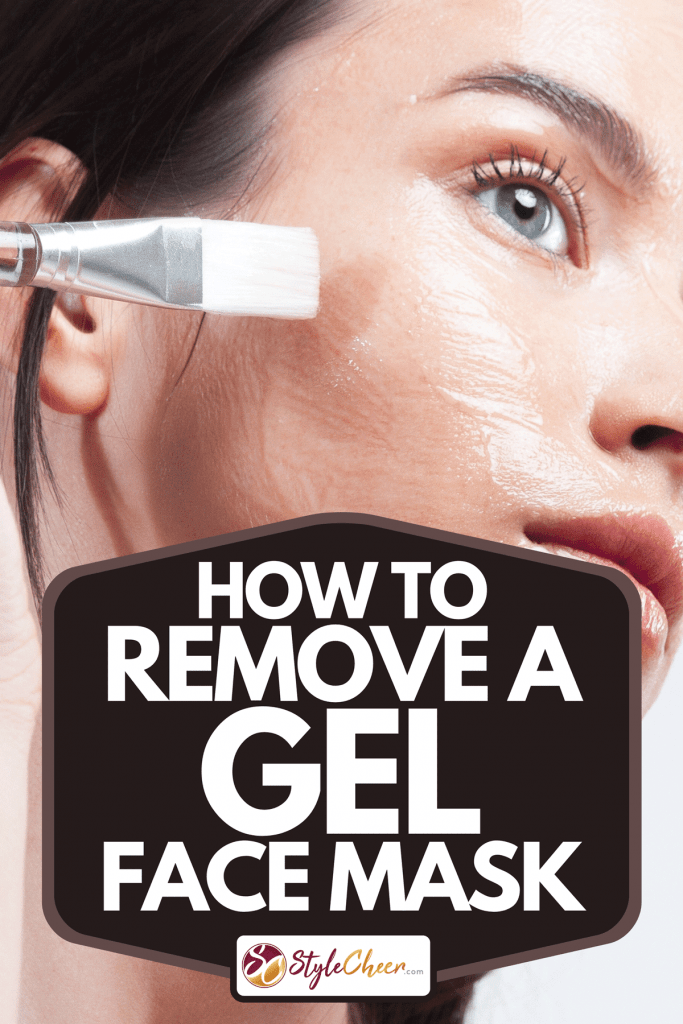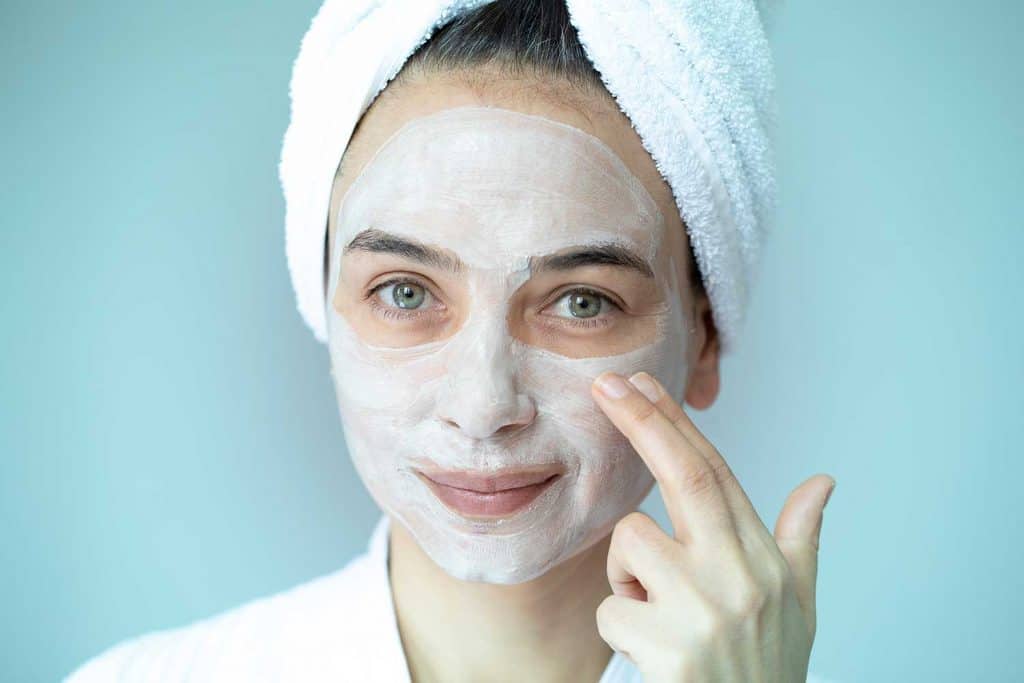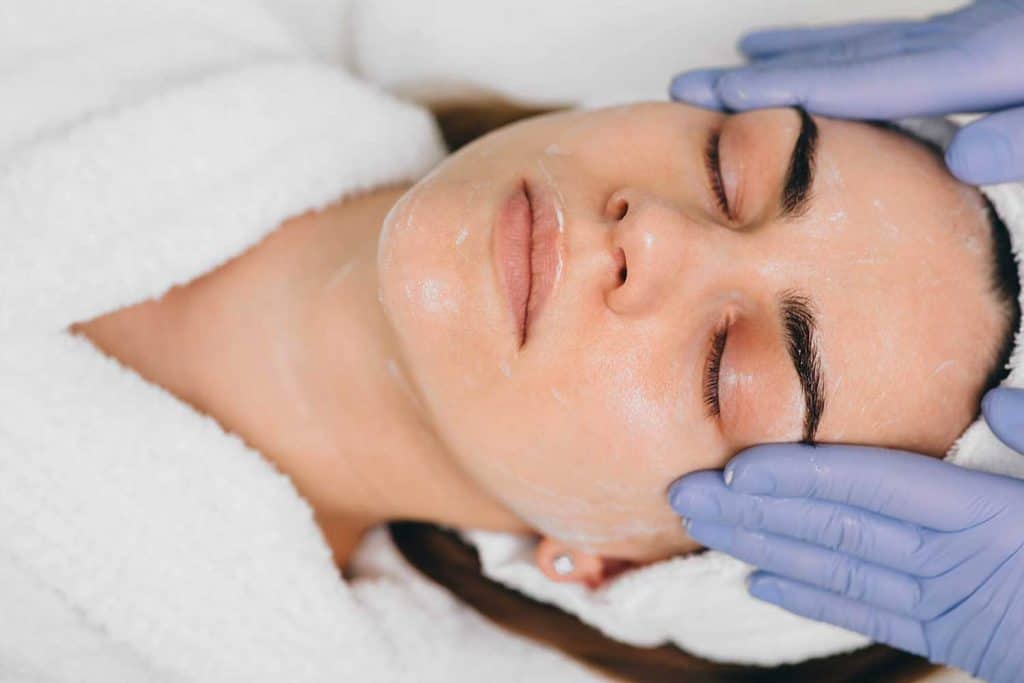We're all looking for a quick and simple way to relieve our stress and benefit our health wherever we can. Skincare is an important part of the daily routine, and gel face masks have become a simple way to help keep skin clean. When it's time to wrap up, however, you'll want to make sure you've got everything off your face before finishing up and might not know how to. Luckily for you, we've researched the best ways to remove gel face masks down below.
Liquid-based gel face masks are easily removed using a warm wet washcloth. Gently wipe each area of your face clean, removing all remaining gel. Do not press hard or scrub. Peel masks can be gently removed from the face, with the remaining product rubbed gently into the skin to boost hydration.
A lot goes into gel masking and keeping your face glowing. So we've included a further guide on more questions and tips you might have regarding skincare and gel masks. Read on below for more helpful information, including what they are and how to remove gel masks in detail.

This article may include affiliate links and elements that were carefully created by our team using advanced ai to help you envision the best style advice.
More on removing gel masks
First, let's briefly describe the difference between the two types of masks. Wash-off gel masks are just what they sound like; gel you smooth across your face and leave to sit and absorb before wiping off. Peel-off masks are sheet masks you put on your face in one piece and then peel off.
Warm water and a washcloth are the easiest way of removing a gel-cream mask after use once finished. Simply washing the excess gel off your face with warm water, gently patting it with a washcloth after will suffice. You can then rub the excess gel into your skin for an added boost of moisture. Make sure your hands are clean during this process to keep your skin healthy.
Remove a peel mask by gently grasping the edge of the mask and peeling it off from your face moving in towards the center. Go slowly and smoothly so as not to tear the mask. Once you reach the center of your face, move to the other side and repeat the process. It may take a few tries to get a gel mask off in one peel, so don't get discouraged.
What are gel masks made of?

Wash-off gel masks are a water-based alternative to more oily moisturizers that some find too heavy for their skin type. Because they are water-based instead of oil-based, they don't sit on the skin as much and hydrate much easier. However, this also means they lack many of the emollients and ingredients found in traditional oil-based masks. Make sure your gel masks will satisfy your skin needs.
Peel gel masks are usually made of materials ranging from aloe vera to cellulose to engage in exfoliating and cleansing. Some even contain bio-cellulose depending on the price range of the mask. They use these gels instead of cotton or paper to cover your face. Again, these masks are largely water-based. Remember, you can always check the materials of the mask before purchase to make sure you're comfortable with what's in it.
How often should you use a gel face mask?
As with almost all skin products, your skin type plays a part in how often you should use products. While there is no hard number on how many times you can mask per week, masking will dry the skin if overdone. Because of this, it's suggested you keep your gel masking to about two to three times a week. Moisturizing your skin afterward is also recommended to help your skin recover some of that moisture lost.
How long should you use a gel face mask?
Generally speaking, 20 minutes is the sweet spot of time for keeping on a cream-based gel mask. Refrain from keeping masks on for longer than this as they can begin to dry out your skin, as previously mentioned. Certain overnight gel masks made to be worn while sleeping at night provide the exception to this rule. These can safely be kept on during the night and removed in the morning.
Peel gel masks should similarly stay on the face for around 20 to 30 minutes to dry before being gently removed. This will give the product enough time to sink into the skin without drying the skin out. Gel masks will always come with instructions on how to engage with them, including the time range. Follow these closely, and you'll be just fine.
Read "Eight Types of Skin Care Face Masks to Know."
When to use a peel-off mask in your skincare routine?
For your peel-off gel mask, conducting your entire skincare routine before masking makes sense. Gel masks lock in hydration into your skin and also adhere better onto clean skin to begin with. Your peel-off mask should be the last thing you do in your routine.
Do you wash your face after a gel mask?
Cream-based gel masks wash off easily with warm water and a washcloth. You won't need to scrub or press hard to get the product off, provided you didn't wait too long to remove it. You'll want to finish moisturizing after your mask to replenish any lost moisture after the mask dries.
For peel masks, there is no need to wash your face after removal. The additional product left behind by these masks is easily massaged into the skin for additional hydration. There's no need to wash it off and waste the product.
See this hydrating gel mask on Amazon.
Which direction should you peel off masks?
One of the main difficulties of peel-off masks is removing them all in one go without tears or mess. It's a skill that takes some practice, but knowing how to go about it can greatly help. One way to begin removing the mask is to start on one corner of your forehead and gently begin peeling. Peel down and towards the center of your face. Once you reach the center, repeat this with the bottom corner on the same side.
You can then repeat this process on the other side until the mask should be easy to remove from your face without issue. Don't worry too much if you're not an immediate expert at this; it can be a tricky process for many people, just starting with peel-off masks. So long as care is taken to remove all of your mask before finishing up, you'll be fine.
Are peel off or wash off face masks better?

In terms of the question, "does this work," both peel and wash off face masks work equally well, and what you'll have to do is find one whose composition and formula work best for your skin type and sensitivity. Neither type is inherently better at cleaning or moisturizing skin due to how it delivers its product.
There is, however, one downside to peel masks that a lot of dermatologists wince at, and it may play a role in which you want to use. Although the peel and place masks are often fun to use, they do pull and tug on the skin, leading to reduced elasticity in the skin in the long run. It won't be instantaneous, but dermatologists definitely see frequent peel-off mask use as unnecessary pulling and prodding on the skin.
If peel-off masks are an occasional bonus to your skin routine as a treat, this likely won't impact much. But repeated use three times a week will accumulate, especially down the road. Keep this in mind if masks are a major part of your routine, and maybe look into a wash-off mask.
Read "11 Types of Face Cleansers to Know" on StyleCheer.
In Conclusion
Gel face masks provide hydration and cleanliness that skin greatly benefits from. Finding one that works for you and your skin type adds a lot. Now that you know what goes into removing a mask, what goes into making a mask, and how to use masks, you can start making informed decisions on how to start incorporating them into your skincare routine. The rest is about having fun.


![Scientist holding Cyanoacrylate glue, Is There An Eyelash Glue Without Cyanoacrylate? [A Guide to Finding Safe Alternatives] - 1600x900](https://stylecheer.com/wp-content/uploads/2023/09/shutterstock_2238414685-300x169.jpg)
![Applying lash glue onto fake eyelashes, Why Is My Lash Glue Not Sticking? [Common Reasons and Solutions] - 1600x900](https://stylecheer.com/wp-content/uploads/2023/09/shutterstock_1059533828-300x169.jpg)
![Pouring black lash glue onto a small mat, What Glue Do Lash Techs Use? [A Guide to Lash Extension Adhesives] - 1600x900](https://stylecheer.com/wp-content/uploads/2023/09/shutterstock_1541038103-300x169.jpg)